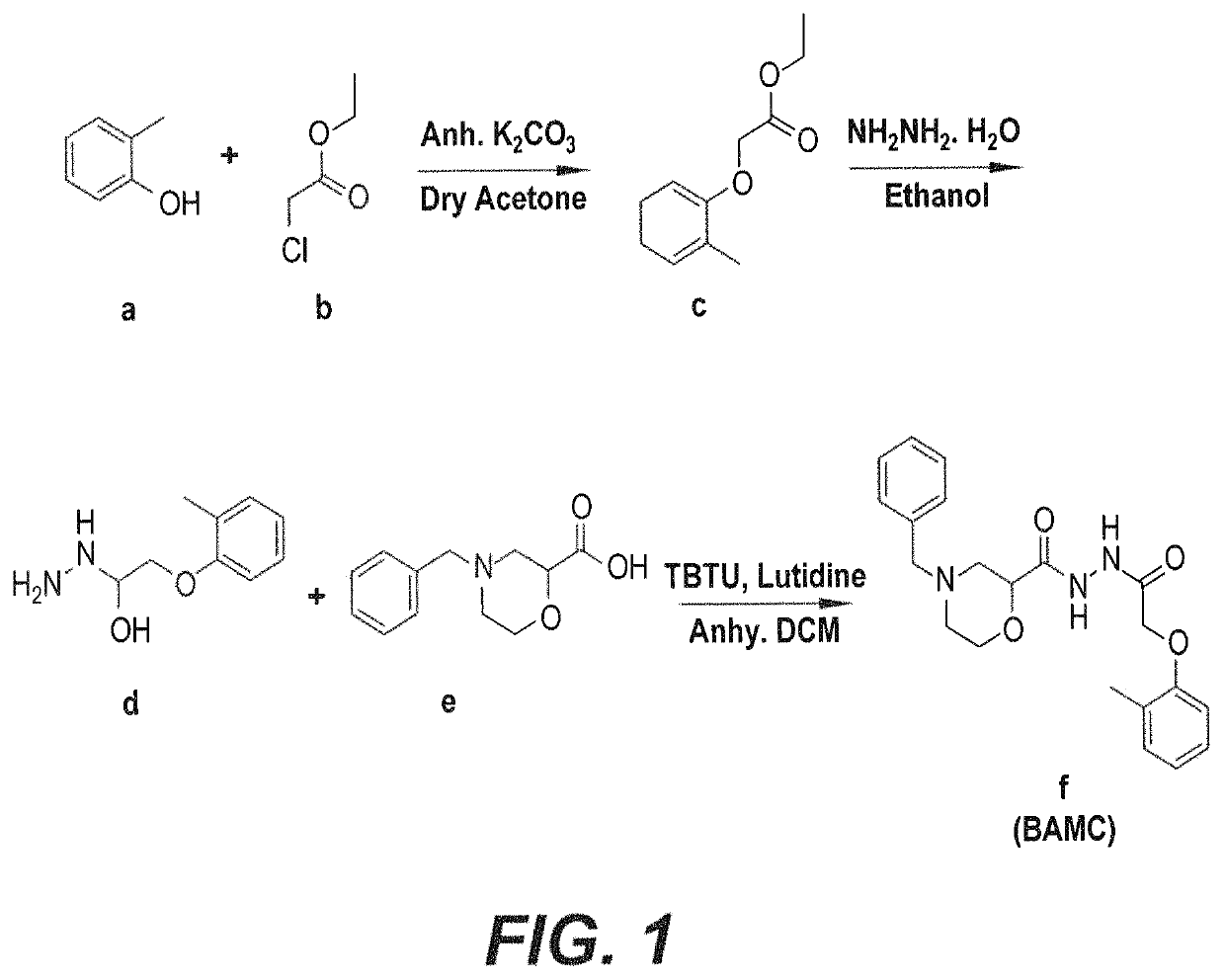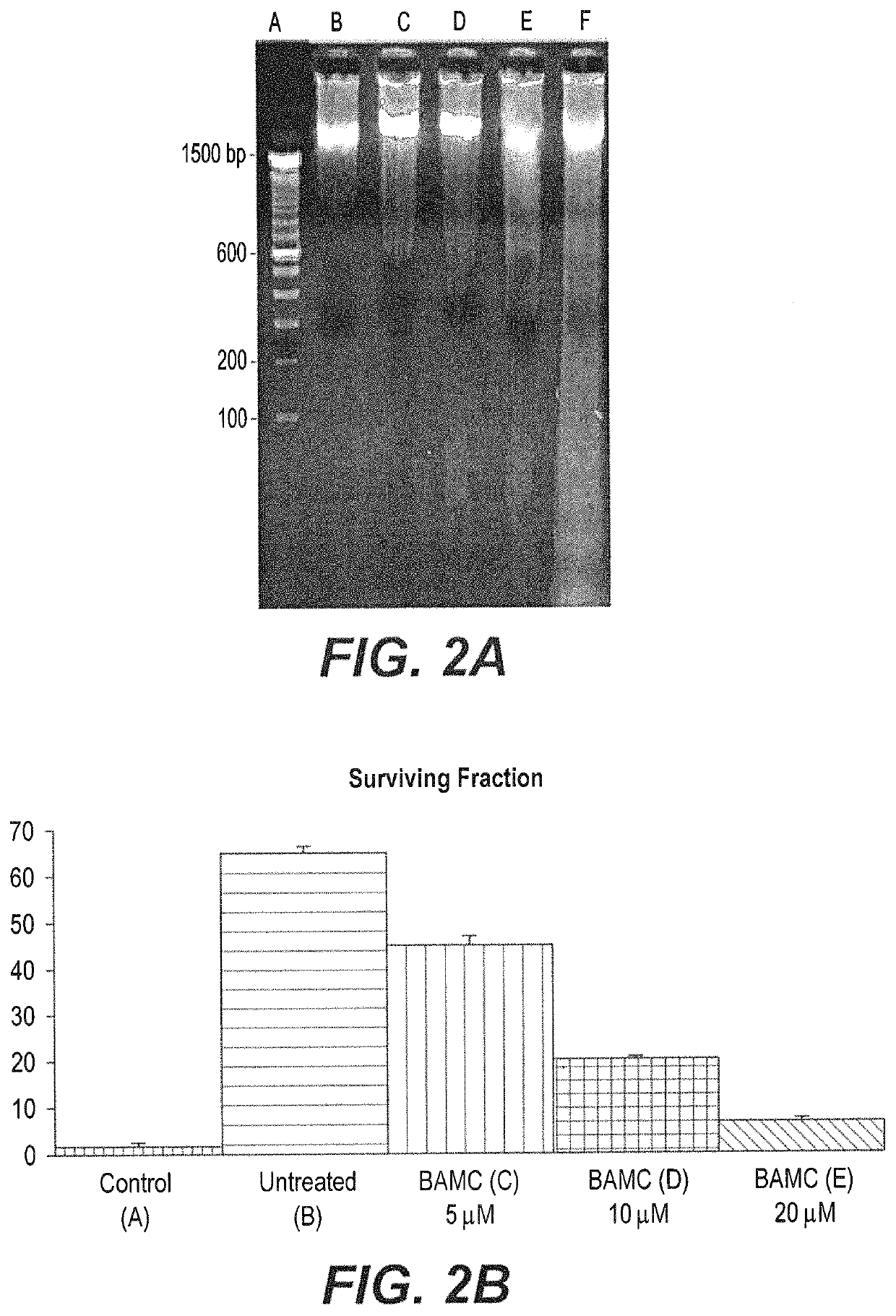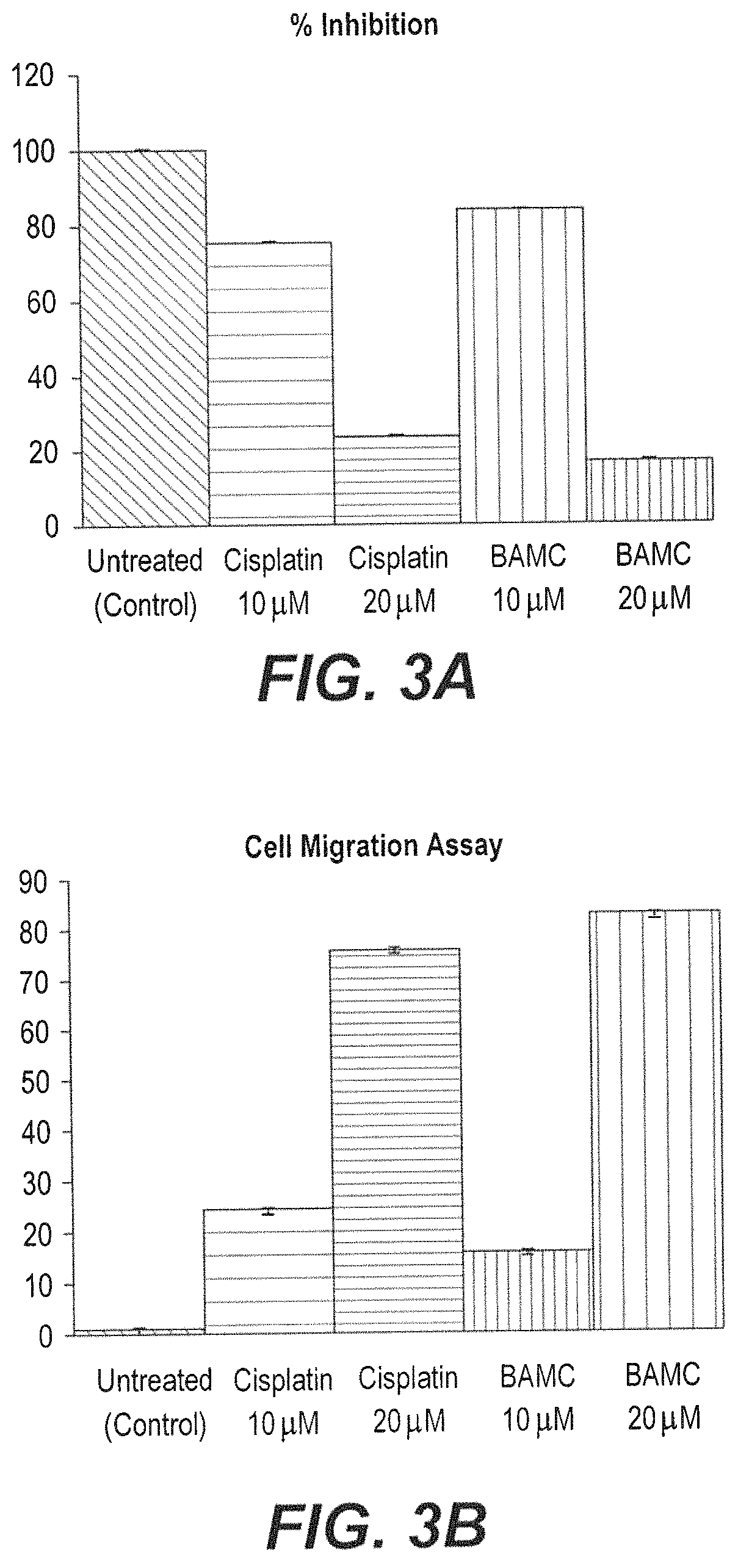Anti-angiogenesis compound
an angiogenesis and compound technology, applied in the field of anticancer compounds, can solve the problems of tumorigenesis and resistance to cancer drugs, and achieve the effects of reducing tumorigenesis, reducing tumorigenesis, and inhibiting the production of vascular endothelial growth factor (vegf)
- Summary
- Abstract
- Description
- Claims
- Application Information
AI Technical Summary
Benefits of technology
Problems solved by technology
Method used
Image
Examples
example 1
Cancer Cells
[0031]Breast cancer cells (MCF-7), lung cancer cells (A549), Hela cells, and peripheral blood mononuclear cells (PBMC) were purchased from the National Center for Cell Sciences (NCCS), Pune, India. The cancer cells were maintained in Dulbecco's modified eagles medium (DMEM), supplemented with 2 mM 1-glutamine and balanced salt solution (BSS), adjusted to contain 1.5 g / L Na2CO3, 0.1 mM nonessential amino acids, 1 mM sodium pyruvate, 2 mM 1-glutamine, 1.5 g / L glucose, 10 mM (4-(2-hydroxyethyl)-1-piperazineethane sulfonic acid) (HEPES), and 10% fetal bovine serum (GIBCO, USA). Penicillin and streptomycin (100 IU / 100 μg) were adjusted to 1 mL / L. The cells were maintained at 37° C. with 5% CO2 in a humidified CO2 incubator.
example 2
Test Concentrations
[0032]Stock solutions of each compound and positive control were prepared fresh prior to the start of every experiment. A stock solution of each compound was prepared at a concentration of 8 mg / mL in 100% Dimethyl Sulfoxide (DMSO, Sigma Chemical Co., St. Louis, Mo.). Working solutions of each test chemical were prepared by serial dilutions with the appropriate culture media. All the compounds were tested using the required concentrations ranging from 10 to 200 μg / ml.
example 3
Cell Viability
[0033]The inhibitory concentration (IC50) value was evaluated using an MTT [3-(4,5-dimethylthiazol-2-yl)-2,5-diphenyltetrazolium bromide] assay. Cancer cells were grown (1×104 cells / well) in a 96-well plate for 48 h to 75% confluence. The medium was replaced with fresh medium containing serially diluted synthesized compounds, and the cells were further incubated for 48 h. The culture medium was removed, and 100 μL of the MTT [3-(4,5-dimethylthiozol-2-yl)-3,5-diphenyl tetrazolium bromide] (Hi-Media, Mumbai, India) solution was added to each well and incubated at 37° C. for 4 h. After removal of the supernatant, 50 μL of DMSO was added to each of the wells and incubated for 10 min to solubilize the formazan crystals. The optical density was measured at 620 nm in an ELISA multiwell plate reader (Thermo Multiskan EX, USA). The OD value was used to calculate the percentage of viability using the following formula.
[0034]%ofviability=ODvalueofexperimentalsample×...
PUM
| Property | Measurement | Unit |
|---|---|---|
| concentration | aaaaa | aaaaa |
| concentrations | aaaaa | aaaaa |
| pH | aaaaa | aaaaa |
Abstract
Description
Claims
Application Information
 Login to View More
Login to View More - R&D
- Intellectual Property
- Life Sciences
- Materials
- Tech Scout
- Unparalleled Data Quality
- Higher Quality Content
- 60% Fewer Hallucinations
Browse by: Latest US Patents, China's latest patents, Technical Efficacy Thesaurus, Application Domain, Technology Topic, Popular Technical Reports.
© 2025 PatSnap. All rights reserved.Legal|Privacy policy|Modern Slavery Act Transparency Statement|Sitemap|About US| Contact US: help@patsnap.com



